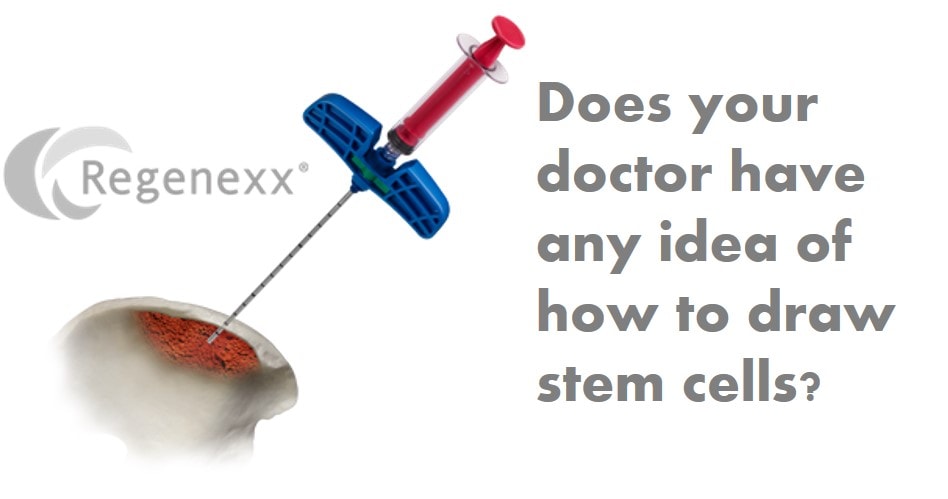Is Your Doctor Harvesting Stem Cells or Junk?
A bone marrow aspirate forms the basis of many stem cell based procedures in orthopedics. However, as any pathologist who works in a hospital lab will tell you, many inexperienced physicians often screw this procedure up-sending down samples that are more blood than bone marrow. Since the former contains few stem cells and the later contain copious stem cells, this is a big problem. So is your doctor even drawing stem cells in the first place?
A bone marrow aspirate (BMA) is when the doctor uses a specialized needle to draw what looks like thick blood from the back of the hip area (PSIS). The procedure forms the basis of a bone marrow stem cell procedure, however, if the doctor messes this part up, there will be little to no stem cells harvested. In particular, if you speak with a pathologist who looks at bone marrow aspirate samples sent by physicians for diagnosis, they’ll relay that many times they’re left looking at blood instead of bone marrow aspirate. Why? The vast majority of BMAs are taken without any kind of imaging guidance. The bone in certain areas of the back of the pelvis if quite thin, so if the doctor places the needle in these areas, it will go too deep and not draw from the equally thin marrow space. How easy is it to make this mistake? Without imaging guidance like x-ray or ultrasound, this is common. Since the blood contains few stem cells (unlike the bone marrow which has many ), the doctor begins with a sample that contains few stem cells. So when he inserts that sample into a simple automated bedside centrifuge, it’s “garbage in-garbage out”-i.e. the patient will end up getting few stem cells injected.
So how can you avoid this SNAFU if you’re planning on an orthopedic stem cell procedure? First, make sure that the doctor is experienced in performing BMAs or learned in a course that allows hand on experience. Second, guidance is the standard of care, so never let a doctor perform the BMA procedure blind (without ultrasound or x-ray guidance). Third, all Regenexx providers count the number of cells in the draw and have standards they need to follow-however about 90% of the physicians performing BMAs have no ability to count their cells. Hence, they have no idea if they’ve ever performed a BMA correctly. So make sure your doctor has the ability to and routinely counts cell, otherwise, how would he know if he was getting a good draw?
The upshot? A BMA as a means of harvesting stem cells is not a difficult procedure, however, you’d be surprised these days at the number of doctors who have never been taught how to perform one properly, despite advertising that they perform stem cell injections. Make sure that your BMA is performed under imaging guidance and that the doctor counts the cells that are being re-injected. If he or she doesn’t do at least these two things-find another doctor!

If you have questions or comments about this blog post, please email us at [email protected]
NOTE: This blog post provides general information to help the reader better understand regenerative medicine, musculoskeletal health, and related subjects. All content provided in this blog, website, or any linked materials, including text, graphics, images, patient profiles, outcomes, and information, are not intended and should not be considered or used as a substitute for medical advice, diagnosis, or treatment. Please always consult with a professional and certified healthcare provider to discuss if a treatment is right for you.
